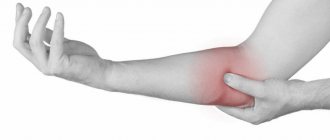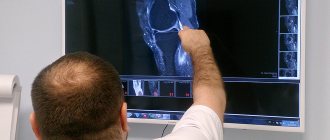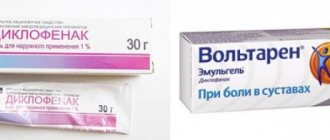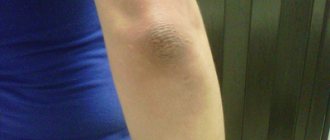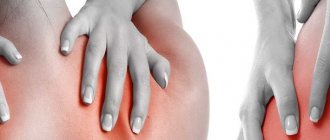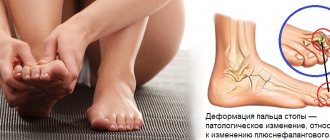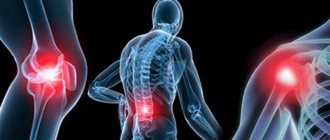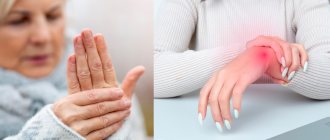Content
- Non-arthritic causes of pain
- Arthritis in children
- Classification of arthritis in children
Joint pain in infants is much less common than in older children. This is due to the fact that pathologies that cause diseases and chronic inflammation of the joints and muscles in the legs and arms often occur as the bone apparatus grows.
A joint is a movable connection between two bones. Bones are held in place by ligaments (tissue formations) and attached to muscles by tendons. Pain in any of these parts is referred to as joint pathology.
The causes of pain in the joints of the legs in a child can be very diverse:
- sprains, sprains and other injuries. If a child complains of pain after a fall, and the injured limb begins to swell, or redness appears at the site of the injury, then you should immediately contact a pediatric traumatologist. As a rule, such injuries are treated quite easily and, provided that all doctor’s prescriptions are followed, disappear without leaving a trace;
- inflammation of striated muscles (myositis). In addition to sharp pain, it is also accompanied by an increase in body temperature and redness of the skin over the site of inflammation. The main cause of the disease is hypothermia. Myositis can be acute or chronic. If all the doctor’s instructions are followed, this disease can be cured;
- chronic pain can be a symptom of the development of tumor processes in the bones and joints. You should undergo a full examination to exclude this pathology. It is worth noting that with early treatment, the prognosis is favorable;
- arthritis (inflammatory processes) and arthrosis (degenerative processes). The legs and feet are most often affected. If a child has one joint affected, then doctors call the disease monoarthritis; if pain is observed in several joints, then they talk about polyarthritis. According to studies, boys under 8 years of age are more likely to develop arthritis.
“Safe” causes of knee pain in a child
In early childhood and adolescence, children experience “growing pains.” Tissues grow and develop unevenly, which causes discomfort and moderate discomfort. This phenomenon is not characterized by sharp, acute pain.
In teenagers, knee pain may occur due to hormonal changes. The restructuring of the body is accompanied by a temporary thinning of the cartilage. The situation is aggravated by excessive physical activity or, conversely, physical inactivity and poor diet. In this case, the pain is also intermittent, aching, but not acute. An orthopedist can confirm or refute the safety of a symptom.
Sharp knee pain in a child always requires medical attention
Non-arthritic causes of pain
Meniscal pain – usually occurs after an injury and affects one joint. Most often appear in children 10-12 years old. They are disturbing under loads, concentrated in the projection of the joint gap where the meniscus is damaged.
Osteochondral - affect one joint, most often on the leg, occur in children 8-10 years old. The mechanism for the development of such pain may be improper physical activity. However, the exact reason is unknown. The pain occurs with exertion and is limited to one joint.
Pain in the patellas , in addition to osteochondropathy and pathological dislocations, can occur with high position of the patellas, chondromalacia, and mediopatellar fold syndrome.
Stress pain in the feet - their causes can be: a number of bone associations, congenital malformations of the feet, joint stiffness syndrome against the background of systemic skeletal pathologies.
Tendon-muscular and enthesitis - variants of chronic and acute pathology (post-traumatic, transient, etc.). Primary enthesopathy is a symptom of SEA syndrome or juvenile arthritis. Secondary occurs against the background of an underlying orthopedic disease.
Joint syndrome – pain varies in variation and severity, usually affecting the hip, ankle, and knee joints. Less commonly – elbows and shoulders. Such pain is accompanied by inflammation. The pain is limited to one joint and the tendon-muscular element or the area where the tendon attaches to the bone.
Pain due to hypermobility affects preschoolers and primary schoolchildren. They can be symmetrical, have a diffuse nature, and are localized on the anterior surface of the legs. In some cases, the ankle and knee joint are affected. Most often these are night and evening pains, which are preceded by exercise. This pain syndrome is myalgia as a consequence of overstrain of the muscles of the legs with a weak capsular-ligamentous element. Many literature sources call this condition “growing pains . Parents should be wary of their child's night pain, because it may be associated with a tumor, especially against the background of fever and profuse sweating.
At an older age, pain due to hypermobility is not detailed and has a diffuse nature. May affect one joint or several. They occur both during and after load (during the day and evening). Such pain appears due to microtrauma of the structures inside the joint, excessive tension of the patellofemoral joint, and stretching of the ligamentous-capsular element.
Infection
Various bacteria can cause inflammation of the knee joint and the tissues around it, manifesting itself as
- Tendonitis (tendons),
- Ligamentites (ligaments),
- Bursitis (bursae),
- Arthritis (the joint itself),
- Myositis (muscles),
- Osteomyelitis (specific inflammation of bone tissue).
Important distinguishing symptoms are the following:
- The presence of toxic-infectious syndrome, increased body temperature, chills, headache, loss of appetite;
- At the same time, the limb in the joint area turns red, swelling appears, and difficulty moving;
- The occurrence of acute pain, the knees constantly hurt at night even at rest.
Arthritis in children
Arthritis is the cause of long-term joint pain in children. The joint capsule is rich in lymphoid cells, which give an immunological response to foreign microorganisms like lymph nodes. Biologically active substances are released from lymphoid cells that affect sensory nerve endings and cause pain. The main symptoms that may indicate this disease are:
- limited mobility of the affected joints. If the child does not walk yet, he will try not to make sudden movements with his leg or foot. Older children begin to limp (in the absence of previous injuries or falls) and take care of the affected limb;
- temperature increase. In acute arthritis, the thermometer can show up to 38-39 C, and in chronic arthritis, a prolonged low-grade fever (about 37 C) can be observed;
- redness of the skin over the affected area;
- general lethargy;
- possible formation of edema over the affected joint.
If you have at least one of the above signs, you should immediately contact your pediatrician, who will prescribe the necessary tests and examinations to remove or confirm the diagnosis. If a child has pain in the joints of his legs, his mobility should be limited until the cause is determined and treatment is prescribed.
Diagnostics
Establishing a correct diagnosis means determining effective treatment that can restore normal functioning in the shortest possible time. First, the doctor interviews and examines the patient. Then you need to take tests to a laboratory and undergo tests using special equipment. In such cases, the following is prescribed:
- radiography;
- magnetic resonance imaging of the knee joint;
- ultrasonography;
- general and biochemical blood test;
- collection of joint fluid.
Classification of arthritis in children
- Infectious or reactive. It occurs against the background of previous infections: ARVI, as well as other diseases. With a general weakening of the body, infection of the joint cavity with pathogenic microorganisms occurs. Moreover, such arthritis often develops after the child has fully recovered. Source: E.I. Alekseeva, E.S. Zholobova Reactive arthritis in children // Questions of modern pediatrics, 2003, vol. 2, no. 1, p. 51—56
- Post-vaccination. This type of arthritis may be an individual reaction of the body to the vaccine. It usually occurs in children with weakened immune systems or when vaccination conditions are violated (vaccination is done during the child’s illness or immediately after recovery without observing the recommended time frame for restoring immunity).
- Viral arthritis. Appears after a child has suffered a severe viral infection: influenza, rubella, hepatitis, etc.
- Rheumatoid arthritis. Currently, it is often diagnosed in children even at a very young age. It is one of the most severe joint diseases. It most often affects children aged 1 to 6 years , and lack of proper treatment can lead to disability. At present, the exact causes of rheumatoid arthritis have not been discovered, but doctors name genetic predisposition and severe viral and bacterial diseases suffered by the child, especially streptococcal and staphylococcal diseases, as possible prerequisites. It is a known fact that the disease is autoimmune. The child’s body perceives connective tissue cells as foreign and begins to release large quantities of lymphocytes and antibodies, destroying them. There is a gradual loss of mobility. Parents should be aware that the main sign of rheumatoid arthritis in a child is prolonged joint pain, but other signs may be absent. Therefore, for any pain in the joints that lasts more than one week (even if the child experiences them sporadically), it is necessary to urgently contact a pediatrician, who will conduct an examination and refer him for treatment to a specialized specialist. Source: N.G. Muratova Modern features of rheumatoid arthritis in children // Vyatsky Medical Bulletin, 1998, No. 1, pp. 43 – 45
- Juvenile arthritis. The main cause of juvenile arthritis is a malfunction of hormonal system . The disease often affects children during puberty and the associated hormonal shift. Source: E.I. Alekseeva, T.M. Bazarova Algorithm for the diagnosis and treatment of juvenile arthritis // Issues of modern pediatrics, 2010, vol. 9, no. 6, p. 78-104
It is also necessary to add that, whatever the cause of arthritis in a child, the course of this disease is aggravated by increased stress on the joint, including during sports. Therefore, at the slightest suspicion of an inflammatory disease of the joint capsule and if a child experiences prolonged pain in the joints, it is necessary to immediately provide a gentle regime of physical activity. After diagnosis and prescription of medications and physical procedures, the doctor will give recommendations on acceptable physical activity for your child.
Multidisciplinary medical doctors have gained extensive experience in diagnosing and treating joint diseases in children. By contacting us, you will receive high-quality medical services.
Sources:
- E.I. Alekseeva, E.S. Zholobova. Reactive arthritis in children // Issues of modern pediatrics, 2003, vol. 2, no. 1, p. 51—56
- N.G. Muratova. Modern features of rheumatoid arthritis in children // Vyatsky Medical Bulletin, 1998, No. 1, pp. 43 – 45
- 3. E.I. Alekseeva, T.M. Bazarova. Algorithm for the diagnosis and treatment of juvenile arthritis // Issues of modern pediatrics, 2010, vol. 9, no. 6, p. 78-104
The information in this article is provided for reference purposes and does not replace advice from a qualified professional. Don't self-medicate! At the first signs of illness, you should consult a doctor.
Which doctor should I contact?
When a child gets sick, parents panic and don’t know where to turn. This is why there is a family doctor. At the first examination, the doctor will determine diagnostic directions and refer you to an orthopedist, rheumatologist, infectious disease specialist or surgeon.
During the examination, it is important to check not only the knees, but also the ankle joint, foot joints, upper limbs, other joints in front and behind, at rest and during movement, to clarify whether the knee of one leg or both hurts, whether pain has appeared in both knees at the same time or alternately , is there any pain at night, is there a feeling of stiffness in the joint in the morning.
After diagnosis, individual treatment is prescribed, conservative or surgical, local in the form of ointments or creams or systemic. You should not smear your knees with various means without consulting a doctor and establishing a diagnosis, or use untested methods of traditional medicine, this can only aggravate the pathology.
Due to the complexity of the differential diagnosis of pain in the knee area, it is necessary to carry it out with special attention; if there are any unclear points, consult several specialists in different fields of medicine.
Prices
| Name of service (price list incomplete) | Price |
| Online opinion of a pediatrician (SPECIAL) | 0 rub. |
| Appointment (examination, consultation) with a pediatrician, primary, therapeutic and diagnostic, outpatient | 1750 rub. |
| Consultation (interpretation) with analyzes from third parties | 2250 rub. |
| Prescription of treatment regimen (for up to 1 month) | 1800 rub. |
| Consultation with a candidate of medical sciences | 2500 rub. |

